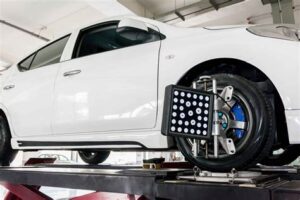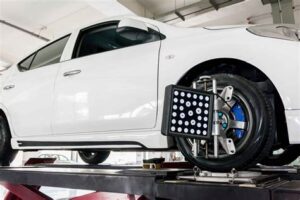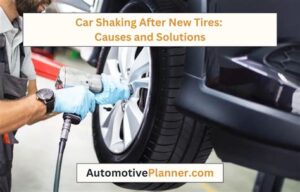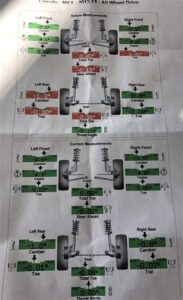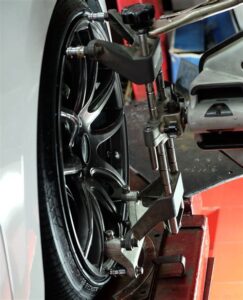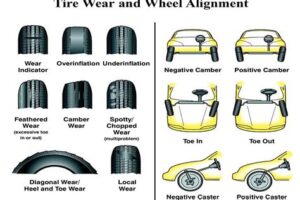Discover common car issues like uneven tire wear, steering misalignments, and vibrations, and learn how to identify and resolve them effectively.When it comes to maintaining your vehicle, ensuring proper wheel alignment is crucial for both your safety and your car’s performance. Misalignment can lead to a host of issues that can compromise your driving experience and incur unnecessary costs over time. As you navigate the roads, it’s essential to stay attuned to your car’s behavior, as certain indicators can signal that it’s time for an alignment check. From uneven tire wear to vibrations in the steering wheel, recognizing these signs early can save you from more extensive repairs down the line. In this blog post, we’ll explore the key signs that your car needs an alignment, helping you keep your vehicle in top shape and ensuring a smoother, safer ride on the road.
Uneven Tire Wear
One of the most prominent signs that your car needs an alignment is uneven tire wear. When the alignment is off, the wheels don’t make proper contact with the road. This can lead to specific areas of your tires wearing down faster than others. For instance, if you notice that the inner or outer edges of your tires are significantly more worn than the rest, it’s a clear indicator that your vehicle’s alignment is out of spec.
This issue not only affects the tread life of your tires but can also compromise your safety while driving. Poorly aligned wheels can cause your tires to lose grip, increasing the likelihood of skidding or losing control, especially in wet conditions. Keeping an eye on tire wear patterns can save you from costly replacements and prevent dangerous driving situations.
To check for uneven tire wear, regularly inspect your tires for discrepancies in tread depth and wear patterns. If you spot any irregularities, it’s advisable to have a professional technician perform an alignment check to ensure your tires wear evenly and maintain traction, enhancing your overall driving experience.
Steering Wheel Off Center
One of the most apparent signs that your car may need an alignment is when your steering wheel is off center. This issue manifests as the steering wheel being tilted to one side while driving straight. If you notice that you have to hold your steering wheel at an angle to keep your vehicle going straight, it indicates that your wheels may not be aligned properly.
Driving with a steering wheel off center can lead to further problems, including uneven tire wear and handling difficulties. It’s crucial to address this issue promptly to maintain safe driving conditions.
To determine if your vehicle is truly misaligned, perform a simple test: on a level road, remove your hands from the steering wheel and observe the direction the car takes. If it pulls to one side or the steering wheel appears tilted, it’s time to consider a professional alignment.
Car Pulls to One Side
One of the most common signs that your car needs an alignment is when it pulls to one side while driving. This can be quite alarming, as it affects your control over the vehicle and can lead to dangerous situations. If you find yourself having to constantly adjust the steering wheel to maintain a straight path, it’s a clear signal that your alignment may be off.
A vehicle that drifts to the left or right means that its suspension or steering components might not be properly aligned. This shift can result from various factors such as hitting a pothole, curb, or other road hazards. Ignoring the issue can not only lead to tire wear, but it can also affect your safety on the road.
To address this problem, it’s recommended to get your car inspected by a professional. They will perform an alignment check and adjust any misalignments to ensure a smoother, safer ride. Proper alignment is crucial for optimal tire performance and overall vehicle safety.
Vibrations in Steering Wheel
Experiencing vibrations in your steering wheel can be an unsettling experience. This phenomenon often indicates that your vehicle requires immediate attention, as it may be a sign of a misalignment or other underlying issues.
There are several reasons why you might feel vibrations in your steering wheel. Common causes include uneven tire wear, improperly balanced tires, or even issues with your vehicle’s suspension or steering components. When your tires are not properly aligned, they may create an uneven tread wear pattern, leading to vibrations that can compromise your vehicle’s stability.
Ignoring these vibrations can lead to more severe problems over time, including damage to your tires and suspension system. Therefore, it is essential to have your vehicle inspected by a professional mechanic to determine the root cause
Squealing Tires when Turning
If you’ve noticed a squealing sound coming from your tires while making a turn, it’s a signal that your vehicle may require an alignment. The noise can be both irritating and concerning, as it can indicate underlying issues with your car’s suspension or tires.
When tires are misaligned, they don’t make equal contact with the road. This causes the tread to wear unevenly, leading to increased friction when turning. The result is that rubber on the tires can screech against the pavement, creating that notorious squealing noise.
Ignoring a squealing noise can lead to further complications, such as decreased fuel efficiency or a loss of control while driving. It’s advisable to get a professional inspection as soon as you notice this sign. Addressing alignment and suspension problems early can save you from more extensive (and expensive) repairs down the line.
Frequently Asked Questions
What are the signs that indicate my car needs an alignment?
Common signs include uneven tire wear, your steering wheel being off-center, pulling to one side while driving, or a shaky steering wheel.
How does misalignment affect my tires?
Misalignment can cause uneven tire wear, leading to a shorter lifespan for your tires and potentially increasing the risk of a blowout.
Can I check my car’s alignment at home?
While you can’t perform a full alignment check at home, you can look for signs of uneven tire wear or test if your car pulls to one side when driving.
How often should I get my car aligned?
It’s generally recommended to have your car aligned every two years, or sooner if you frequently hit potholes or curbs.
Is it safe to drive with a misaligned car?
Driving with misalignment can be dangerous as it affects handling and stability, potentially leading to loss of control.
What can cause my car to become misaligned?
Common causes include hitting potholes, curb impacts, worn suspension components, or changes in load or tire pressure.
Will aligning my car improve fuel efficiency?
Yes, proper alignment can improve fuel efficiency as misalignment makes the engine work harder to move the vehicle.
